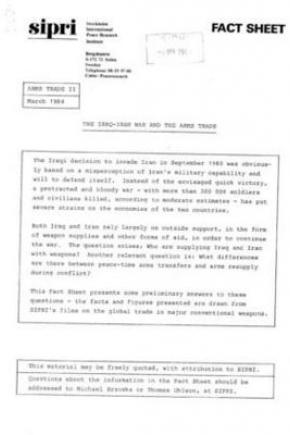The Iraq–Iran War and the Arms Trade
The Iraqi decision to invade Iran in September 1980 was obviously based on a misperception of Iran's military capability and will to defend itself. Instead of the envisaged quick victory, a protracted and bloody war—with more than 300 000 soldiers and civilians killed, according to moderate estimates—has put severe strains on the economies of the two countries.
Both Iraq and Iran rely largely on outside support, in the form of weapon supplies and other forms of aid, in order to continue the war. The question arises: Who are supplyinq Iraq and Iran with weapons? Another relevant question is: What differences are there between peace-time arms transfers and arms resupply during conflict?
This Fact Sheet presents some preliminary answers to these questions—the facts and figures presented are drawn from SIPRI's files on the global trade in major conventional weapons. This material may be freely quoted, with attribution to SIPRI. Questions about the information in the Fact Sheet should be addressed to Michael Brzoska or Thomas Ohlson, at SIPRI.
Click here to download this Fact Sheet
Contents
1. Introduction
2. Arms resupply during the war
3. Effect on regional arms procurement
4. Conclusions


